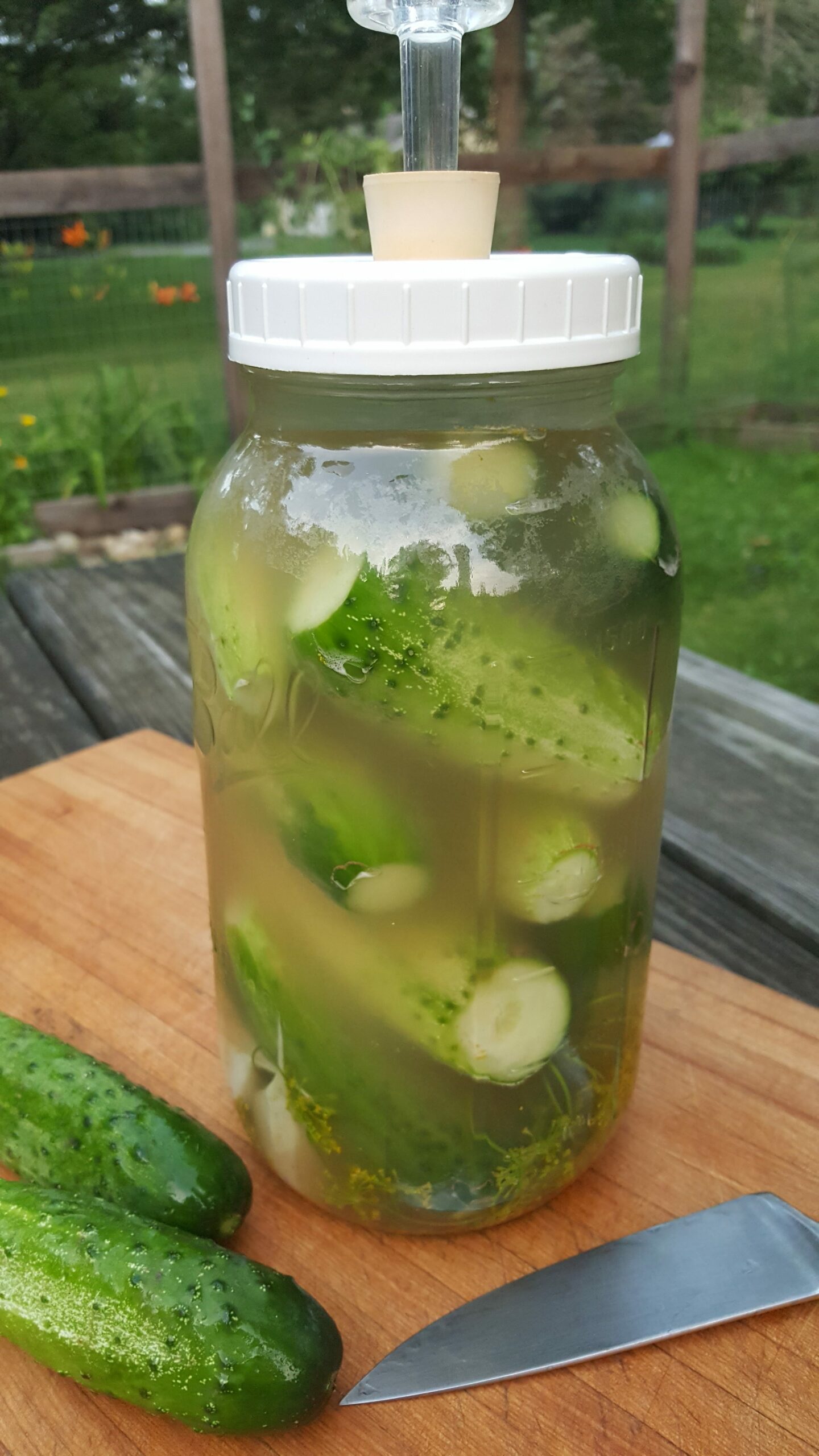The season of veggie abundance is back (thank goodness!) and we have lots and lots of veggies ready for harvest here in upstate NY. When I pick up our CSA (Community Supported Agriculture) share each week, sometimes I’m a little overwhelmed by the heavy bags in my hands until I start envisioning all of the possibilities. . .
For example, last week we received an abundance of zucchini and cucumbers which were promptly transformed into Tomato Cucumber Salad, Sweet and Sour Cucumber Salad, Zoodles with Pesto, and Garden Fresh Ratatouille .
Since I picked up quite a few cucumbers (and the ones from our own garden are almost ready to pick), I decided to preserve some of the small cucumbers by making gut-health boosting, probiotic-filled Lacto-Fermented Dill Pickles. In case you have an abundance of cucumbers too, here’s my favorite quick and easy real food recipe for scrumptious pickles.
Prep time: 10 to 15 minutes
Total time: 3 days to 2 weeks
Ingredients:
3 pounds small cucumbers (or enough to fill a 1/2 gallon jar)
1/2 cup fresh dill (or 2 tablespoons dried dill)
1/2 head garlic, cloves separated with skins on
2 oak leaves, grape leaves, or black tea bags (to provide tannins and prevent hollow pickles)
1 cup apple cider vinegar
1 cup lacto-fermented pickle juice (from Bubbies or other lacto-fermented pickles) OR 1 cup freshly strained whey OR 1 cup water
2 cups chlorine free water
1/4 cup sea salt

Directions:
- Bring apple cider vinegar to a boil in a small saucepan then set aside to cool.
- Wash half gallon jar in hot soapy water and set aside.
- Wash cucumbers and trim ends (to prevent hollow pickles).
- Put garlic cloves, dill and leaves or tea bags in the bottom of the jar.
- Pack prepared cucumbers into jar leaving 1 to 2 inches at the top.
- Make a brine by stirring cooled apple cider vinegar, pickle juice (or other starter), water, and salt together. Pour over pickles until all pickles are submerged in brine.
- Cover pickles with a pickling weight, boiled rock, or a cabbage leaf to ensure they stay submerged.
- Put a fermentation lid with airlock on the jar. Alternatively, put a clean cloth on the jar and secure it with a rubber band.
- After 3 days, using a clean fork/knife, remove a pickle each day and cut off a piece to see if it’s done. They are done when they are slightly sour but still crunchy. Cover the jar with a lid and put in the fridge.
Notes:
- Cucumbers are quintessential pickling veggies but surprisingly, they are not the best fermenters out there. Because of this, I use pickle juice as a starter and boiled/cooled apple cider vinegar to give these pickles a solid nudge toward fermenting properly. The pickle juice provides some acidity and a healthy culture of the right bacteria for lacto-fermentation. The apple cider vinegar increases acidity as well to help the right kind of bacteria thrive.
- If you’re wanting to try your hand at a popular recipe with just water, salt, and spices (but slightly higher risk of not turning out how you’d like), check out these Kosher Dill Pickles from Cultures for Health.
- These pickles will last for months in the fridge, but in our house they get eaten much faster than that.
- Love pickles? Here is an article with 12 (More) Recipes to Make the Perfect Dill Pickle
Tried them? Questions? Leave a comment below.
Cheers to your (digestive) health,
Erin

